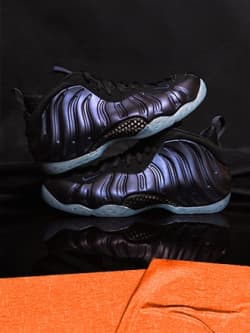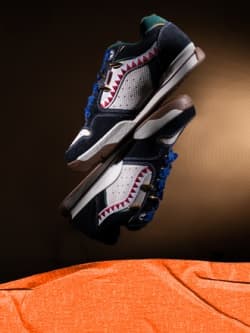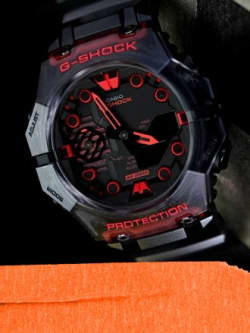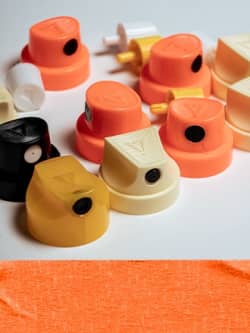#FactsFriday: The Nike Air Max Plus
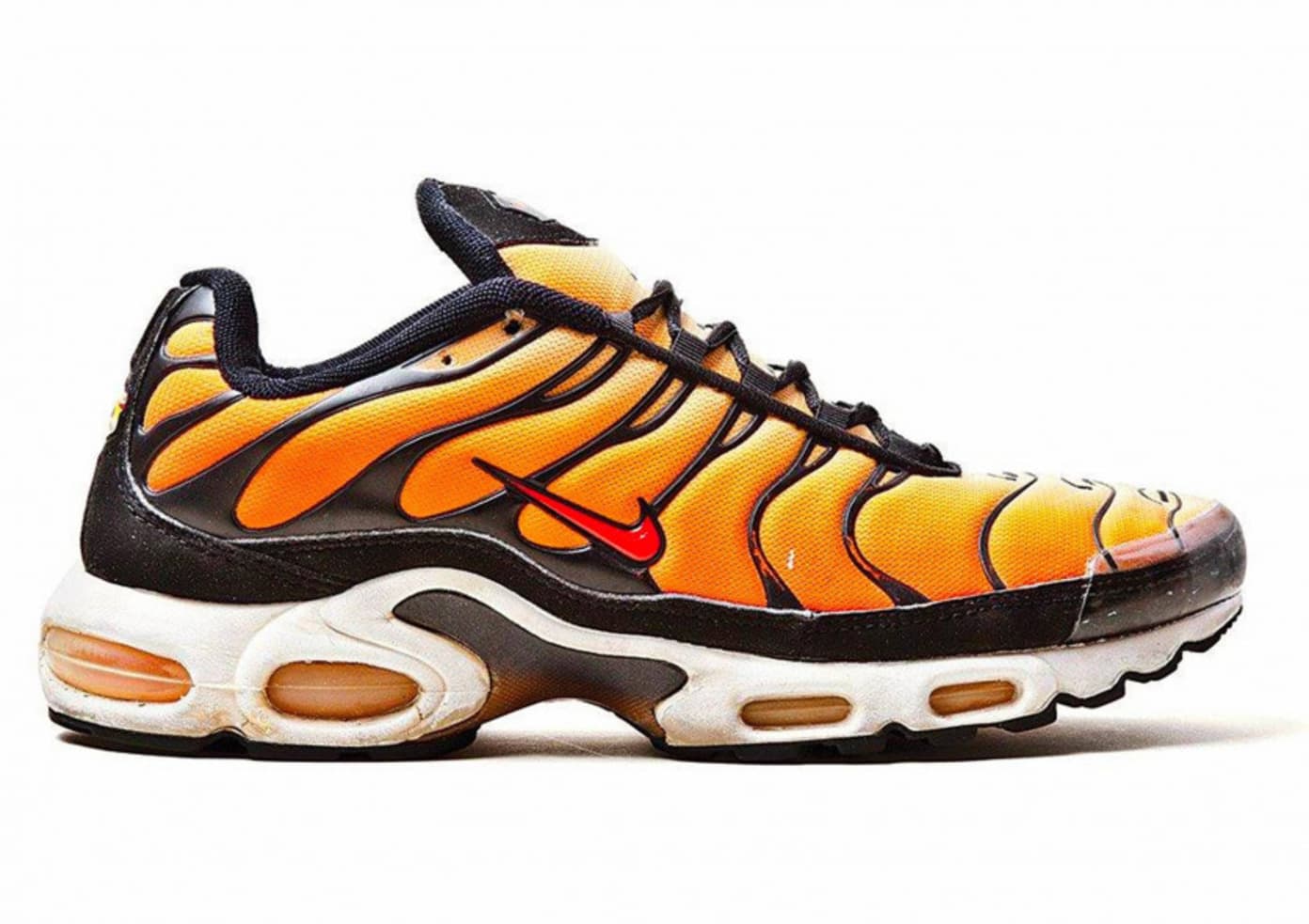
Some athletic shoes transcend their performance roots and become a cultural phenomenon. The Nike Air Max Plus, released in 1998, is one such shoe.
This unique addition to the Air Max family defined the era in which it debuted as well as those that followed. The Nike Air Max Plus is thanks to the now-legendary Nike designer, Sean McDowell. McDowell was hired by Nike in 1997 and was almost immediately assigned to work on a project with the brand’s most important retailer, Foot Locker. 
And the task was not an easy one. McDowell was to create a new running shoe that harnessed Tuned Air, a breakthrough in Nike’s air cushioning technology. But Foot Locker had already rejected more than a dozen proposals from established Nike designers by the time McDowell was brought on. What McDowell didn’t know though, was that his sketchbook filled with his Florida sunsets is what he needed to impress Foot Locker.
Before starting at Nike, McDowell had spent time in Florida, where he “hung out on the beaches and just thought and sketched”, he recalls. The young designer looked at the palm trees bending in the wind and thought they would provide great stability for one’s foot, as well as make a great quarter panel. He applied this thinking to what was then referred to as project “Sky Air”. Once he heard that name, he started sketching different coloured sunsets, dotted with palm trees that ranged from the artful to the geometric. 
Two other important aspects of the Nike Air Max Plus were also due to Sean McDowell’s inexperience with Nike. The first was the Swoosh, which is slimmer and longer than it should be. This was a result of McDowell not being provided a template for Nike’s iconic Swoosh when designing the Plus. The second aspect resulted from McDowell’s running past, where he was always told to run on the side of the road that faced cars. Due to this, McDowell put reflective bars on the toe box and tongue, when most Nike models before had reflective details on the back. This is arguably the most popular aspect of the Air Max Plus.

The last important aspect of the Plus was one that the designer actually didn’t want to include initially. “They told me the Tn Air logo was a really big deal and I needed to feature it prominently,”McDowell said, who had not included it in his initial sketches of the sneaker. Out of obligation, he threw a Tn Air logo on the heel and the sole which pointed towards the new Tuned Air technology. Today, that Tn Air logo is among the most famous in Nike’s designs and has come to represent something beyond the sneaker that originally hosted it. You even see Nike applying larger Tn Air logos to the silhouette in the "Big Logo" versions of the Plus.

The Nike Air Max Plus was the first sneaker to contain Nike’s biggest technological innovations at the time: the Tuned Air unit. While Nike had previously focused on increasing the size of Air Max’s bubbles, the brand decided to take a more delicate approach. The goal was to distribute Air in a manner that provided efficiency and stability for the wearer, and this was done through the Tuned Air’s ‘hemispheres’, which allowed the unit to reduce pressure in the heel, while increasing cushioning at the forefoot.
While the Nike Air Max Plus had cutting-edge technology, there were two main issues that arose when creating the sample. The first was due to the Plus’ iconic gradient colour. McDowell was informed that it would be impossible to make the type of faded upper he had envisioned. However, his perseverance shone through and he had the factory start with the lightest shade and print over it in increasingly dark tones. This had never been done before but it only took one sample to get the desired outcome. The second issue that arose was due to the sneaker’s palm tree exoskeleton, with the type of welding needed for exoskeleton having never been done before. Again, not taking no for an answer, McDowell flew to China and experimented, eventually succeeding by using three different welds instead of one. 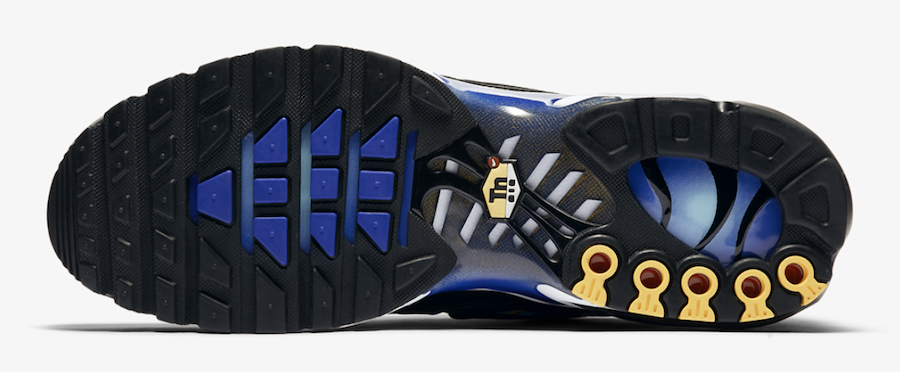
The shoe was finally unveiled to Foot Locker and the representatives were blown away. Instead of commissioning market studies, they made their way to a Foot Locker and put the sample on the shelves to see how young customers reacted. “Five or 10 minutes later, there were like 10 kids flocking to the shoe asking, ‘What is this? How do I get it?’’’ remembers McDowell. The staff at the store were equally puzzled, but Foot Locker and Nike executives had seen all they needed to in order to green light the Air Max Plus’ production.
The Nike Air Max Plus launched in 1998, dressed in three colourways, all derived from McDowell’s Florida-inspired sketches. There was the sunset - the blue and yellow, the night sky—the black with hints of red, and the sunrise—the blinding orange and yellow. With these strong release colourways, and paired with the Plus’ unique and intimidating design, the Tn came to be the shoe of choice for those going for an “up-to-no-good” look. In France, the shoe is synonymous with racaille style, the equivalent of the British “roadman.” In the U.K., the Plus is often held up as being emblematic of London’s youth culture and sneaker scene, being seen in raves and garage parties in the late-’90s and early-’00s. In Australia, wearing a pair of Tn often meant you were looking for trouble and the model became a fixture among criminals and in Australian prisons. It was so popular in fact, that Vogue named it one of the 10 most-wanted items in January 1999.
2018 marks 20 years of Tuned Air and Nike have therefore expanded on the 1998 model. The Plus has been given Nike’s 2018 VaporMax sole, creating a hybrid Air Max Plus VaporMax that flew off the shelves. When looking back on the history, the odds were stacked against the Air Max Plus becoming what it is today. It was a Foot Locker shoe, designed by a Nike rookie who couldn’t even draw the brand’s logo properly, but he challenged conventions because he refused to take no for an answer. 


